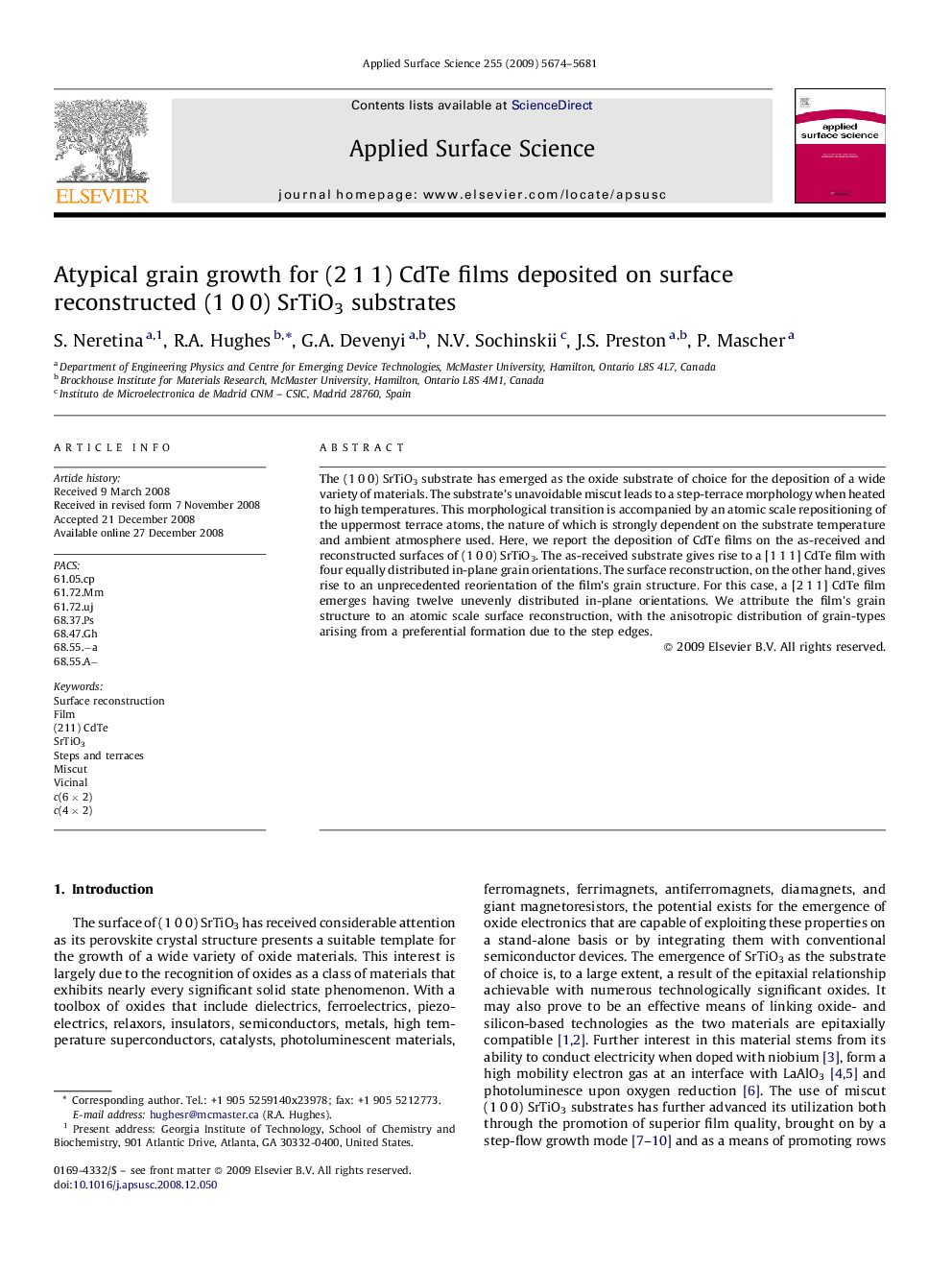| Article ID | Journal | Published Year | Pages | File Type |
|---|---|---|---|---|
| 5367257 | Applied Surface Science | 2009 | 8 Pages |
The (1Â 0Â 0) SrTiO3 substrate has emerged as the oxide substrate of choice for the deposition of a wide variety of materials. The substrate's unavoidable miscut leads to a step-terrace morphology when heated to high temperatures. This morphological transition is accompanied by an atomic scale repositioning of the uppermost terrace atoms, the nature of which is strongly dependent on the substrate temperature and ambient atmosphere used. Here, we report the deposition of CdTe films on the as-received and reconstructed surfaces of (1Â 0Â 0) SrTiO3. The as-received substrate gives rise to a [1Â 1Â 1] CdTe film with four equally distributed in-plane grain orientations. The surface reconstruction, on the other hand, gives rise to an unprecedented reorientation of the film's grain structure. For this case, a [2Â 1Â 1] CdTe film emerges having twelve unevenly distributed in-plane orientations. We attribute the film's grain structure to an atomic scale surface reconstruction, with the anisotropic distribution of grain-types arising from a preferential formation due to the step edges.
